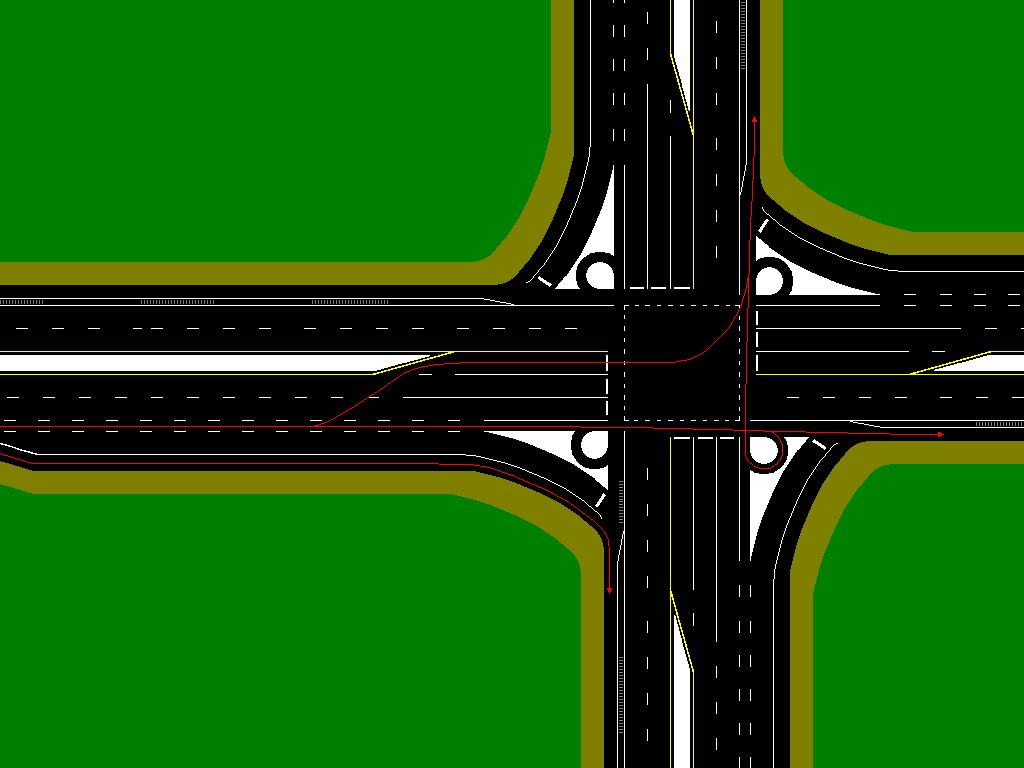Bike lanes do have a time and a place where they are appropriate if set up correctly, that is by no means everywhere or anyway:
#1 ~ When there is
NOT "on street parking" to the right of the main traffic lane of any type or form.
----- ----- Bike lanes should never be built on roads with on street parking. On such roads bikes should use the main lanes and "take the lane."
----- ----- Any road with on street parking should never have a speed limit greater then 25mph for safety reasons regardless of bike presence or not.
#2 ~ On roadways where both the legal speed limit
and the speed of heavy vehicle traffic normally exceeds 25mph cycle lanes do become appropriate in some situations.
----- ----- Bike lanes should never be built on roads with speeds of 25mph. or less. Bikes should use the main lanes and "take the lane" on such roads.
#3 ~ When both the legal speed limit
and the speed of heavy vehicle traffic exceeds 45mph at sufficient traffic density properly set up bike lanes become highly desirable.
Extra Especially on even higher speed roads or when the road has heavy full size vehicle traffic volumes and/or is windy enough or passing through hilly enough country that visibility is significantly reduced such that at the large speed differential between cycle traffic and heavy vehicle traffic, said heavy vehicles may not physically be able to see a cyclist ahead in the main traffic lane until they are so close that it would be difficult or impossible to slow down in time to avoid hitting the cyclist from the rear when rounding a curve or cresting the top of a hill.
In such cases where a bike lane is provided:
----- The bike lane(s) should
NOT be the gutter.
----- The bike lane(s) should be paved and in no worse condition then any other travel lane.
----- The bike lane(s) should be at least 4-feet wide; preferably wider for a single bike lane.
----- The bike lane(s) should have a dividing zone between the bicycle lane and the main vehicle lanes consisting of two white fog lines at least a foot apart from each other to provide a little "elbow room" between the main lanes and the cycle lane. Not just a single white fog line as normal. Preferably shallow rounded edge rumble strips set down in twenty foot or so lengths with twenty foot lengths of empty space in-between them to allow cyclists to merge in and out of the cycle lane without having to ride on the rumble strips should be cut into the divider space between the two white lines. As I said these rumble strips should be cut shallow and with rounded edges so they can be ridden over without trouble by cyclists if need be, but they should be there to wake up wandering motorists who drift to the right into the cycle lane.
----- Should have a shoulder edge (does not have to be paved) to the right of the bike lane of sufficient width for stalled or wrecked heavy vehicles to be moved to without blocking the bike lane.
----- Like This (assume major high traffic 5-lane 45+mph highway + single bicycle lanes + gravel shoulder on each side):
 When the bike lane is routed through a high speed U.S. type intersection:
When the bike lane is routed through a high speed U.S. type intersection:
----- The bike lane(s) should be properly routed through intersections so that straight through cycle traffic is
NOT to the right of right turn only lanes and should be set up such that heavy vehicle traffic attempting to merge over into the right hand turn only lane has sufficient distance to do so safely without "right hooking" or side-swiping cyclists and pavement markings and signage should be clearly provided indicating that through traffic cyclist have right of way and right turning heavy vehicles must merge over safely and respectfully across the straight through cycle lane.
----- The bike lane(s) should be properly set up so that left turning cycle traffic may "double step, two straights with a loop in the middle on the island" a left hand turn if heavy vehicle traffic is too heavy to allow them to safely merge over into the main vehicular left hand turn lane of the intersection.
----- Like This (assume traffic light controlled intersection of two major high traffic 45+mph highways):
